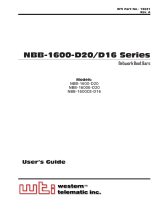
Contents
Preface ............................................................................................................................... 6
1 Introduction ................................................................................................................ 7
1.1 Purpose of the Peripheral ....................................................................................... 7
1.2 Features ........................................................................................................... 7
1.3 Functional Block Diagram ....................................................................................... 8
1.4 Supported Use Case Statement ............................................................................... 8
1.5 Industry Standard(s) Compliance Statement ................................................................. 8
2 Peripheral Architecture ................................................................................................ 9
2.1 Clock Control ..................................................................................................... 9
2.2 Memory Map .................................................................................................... 10
2.3 Signal Descriptions ............................................................................................. 11
2.4 Protocol Description(s) ......................................................................................... 12
2.5 Memory Width and Byte Alignment .......................................................................... 20
2.6 Endianness Support ............................................................................................ 21
2.7 Address Mapping ............................................................................................... 22
2.8 DDR2 Memory Controller Interface .......................................................................... 26
2.9 Refresh Scheduling ............................................................................................ 29
2.10 Self-Refresh Mode.............................................................................................. 29
2.11 Reset Considerations .......................................................................................... 30
2.12 VTP IO Buffer Calibration ..................................................................................... 31
2.13 Auto-Initialization Sequence ................................................................................... 31
2.14 Interrupt Support ................................................................................................ 34
2.15 DMA Event Support ............................................................................................ 34
2.16 Power Management ............................................................................................ 34
2.17 Emulation Considerations ..................................................................................... 35
3 Supported Use Cases ................................................................................................ 36
3.1 Connecting the DDR2 Memory Controller to DDR2 Memory ............................................. 36
3.2 Configuring Memory-Mapped Registers to Meet DDR2-400 Specification ............................. 36
4 DDR2 Memory Controller Registers ............................................................................. 41
4.1 SDRAM Status Register (SDRSTAT) ........................................................................ 42
4.2 SDRAM Bank Configuration Register (SDBCR) ............................................................ 43
4.3 SDRAM Refresh Control Register (SDRCR)................................................................ 45
4.4 SDRAM Timing Register (SDTIMR) .......................................................................... 46
4.5 SDRAM Timing Register 2 (SDTIMR2) ...................................................................... 47
4.6 Peripheral Bus Burst Priority Register (PBBPR) ........................................................... 48
4.7 Interrupt Raw Register (IRR) .................................................................................. 49
4.8 Interrupt Masked Register (IMR) ............................................................................. 50
4.9 Interrupt Mask Set Register (IMSR) .......................................................................... 51
4.10 Interrupt Mask Clear Register (IMCR) ....................................................................... 52
4.11 DDR PHY Control Register (DDRPHYCR) .................................................................. 53
4.12 VTP IO Control Register (VTPIOCR) ........................................................................ 54
4.13 DDR VTP Register (DDRVTPR) .............................................................................. 55
4.14 DDR VTP Enable Register (DDRVTPER) ................................................................... 55
Appendix A Revision History ............................................................................................. 56
SPRUEM4A – November 2007 Table of Contents 3
Submit Documentation Feedback





















